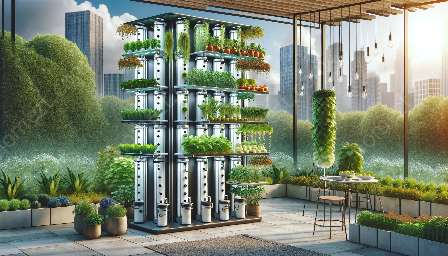Vertical gardening is a popular and space-efficient way to grow plants, but managing pests and diseases in a vertical garden can be challenging. In this comprehensive guide, we will explore effective strategies for controlling pests and diseases in vertical gardens, providing you with the knowledge and tools necessary to maintain a healthy and thriving vertical garden.
Understanding the Unique Challenges of Vertical Gardening
Vertical gardens present unique challenges when it comes to pest and disease control. The close proximity of plants and the vertical structure can create microclimates that are conducive to pest infestations and disease outbreaks. Additionally, the limited space in vertical gardens can make it difficult to implement traditional pest and disease control measures.
One of the common pest issues in vertical gardens is aphids. These small, sap-sucking insects can quickly multiply and infest a vertical garden, causing damage to plants. Diseases such as powdery mildew and fungal infections can also spread rapidly in the confined spaces of a vertical garden.
Integrated Pest Management (IPM) for Vertical Gardens
Integrated Pest Management (IPM) is a holistic approach to pest and disease control that emphasizes prevention and the use of environmentally friendly strategies. When applied to vertical gardening, IPM can help mitigate pest and disease issues while minimizing the use of chemicals and preserving the natural balance of the garden ecosystem.
One of the key components of IPM is the identification of pests and diseases. Regular monitoring of your vertical garden will allow you to detect pest infestations and disease outbreaks early, giving you the opportunity to intervene before the issues escalate. In a vertical garden, this can be achieved by inspecting the plants from top to bottom and paying attention to the undersides of leaves and stems where pests often hide.
Implementing physical barriers, such as insect netting and row covers, can help protect your vertical garden from pest infestations. These barriers create a protective shield around the plants, preventing pests from accessing them. Additionally, introducing beneficial insects, such as ladybugs and lacewings, can help control pest populations naturally, serving as a form of biological control in your vertical garden.
Selecting Resistant Plant Varieties
When planning and designing your vertical garden, it is important to select plant varieties that are resistant to common pests and diseases. Choosing plants that are naturally resistant can reduce the likelihood of pest and disease issues, minimizing the need for intervention.
Some plant varieties have built-in resistance to certain pests and diseases, making them ideal candidates for vertical gardens. For example, certain herbs like rosemary and lavender are known for their natural pest-repelling qualities, while plants such as marigolds can deter harmful nematodes. By incorporating these resistant varieties into your vertical garden, you can create a more robust and resilient growing environment.
Maintaining Optimal Growing Conditions
Creating and maintaining optimal growing conditions is essential for preventing pest and disease problems in a vertical garden. Proper watering, adequate airflow, and sufficient sunlight can promote plant health and resilience, making them less susceptible to pests and diseases.
Overwatering can create a damp and humid environment, which is favorable for the development of fungal diseases. In a vertical garden, it is important to ensure that excess water can drain freely from the planting containers, preventing waterlogged conditions. Adequate airflow between the plants can also help minimize the risk of fungal diseases, as it reduces moisture buildup and promotes ventilation.
Regular Maintenance and Vigilance
Regular maintenance and vigilance are key to successful pest and disease control in a vertical garden. By staying attentive to the condition of your plants and promptly addressing any signs of pest infestations or diseases, you can prevent issues from escalating and maintain a healthy growing environment.
Inspecting the plants for any abnormal signs, such as discolored leaves, stunted growth, or unusual markings, can signal the presence of pests or diseases. Promptly addressing these signs by removing affected plant parts or applying targeted treatments can help contain the issues and prevent them from spreading to the rest of the garden.
Conclusion
Vertical garden pest and disease control requires a proactive and holistic approach that takes into account the unique challenges and dynamics of vertical gardening. By implementing integrated pest management strategies, selecting resistant plant varieties, maintaining optimal growing conditions, and practicing regular maintenance and vigilance, you can effectively mitigate pest and disease issues in your vertical garden, ensuring the health and vitality of your plants.





















